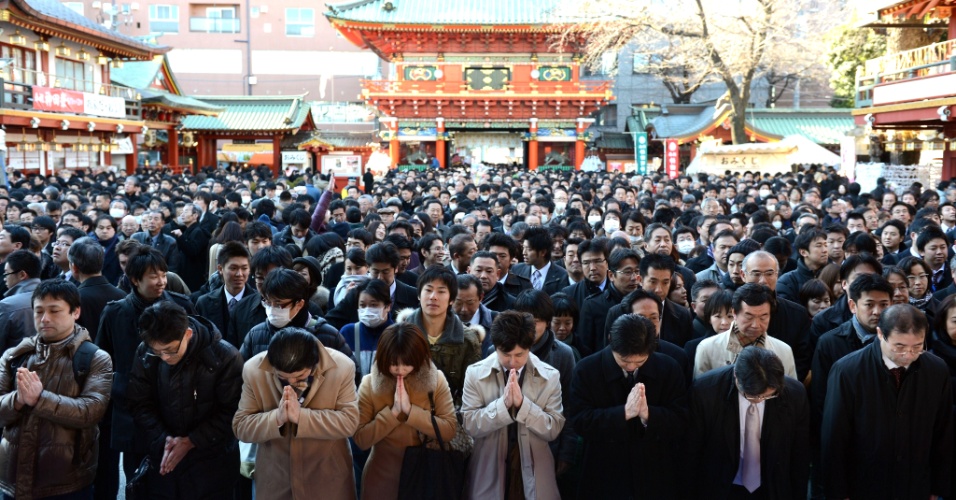New Year (shogatsu or oshogatsu) is the most important holiday in Japan. Most businesses shut down from January 1 to January 3, and families typically gather to spend the days together.
Years are traditionally viewed as completely separate, with each new year providing a fresh start. Consequently, all duties are supposed to be completed by the end of the year, while bonenkai parties (“year forgetting parties”) are held with the purpose of leaving the old year’s worries and troubles behind.
Homes and entrance gates are decorated with ornaments made of pine, bamboo and plum trees, and clothes and houses are cleaned.
On New Year’s eve, toshikoshi soba (buckwheat noodles), symbolizing longevity, are served. A more recent custom is watching the music show “kohaku uta gassen”, a highly popular television program featuring many of Japan’s most famous J-pop and enka singers in spectacular performances.
January 1 is a very auspicious day, best started by viewing the new year’s first sunrise (hatsu-hinode), and traditionally believed to be representative for the whole year that has just commenced. Therefore, the day is supposed be full of joy and free of stress and anger, while everything should be clean and no work should be done.
It is a tradition to visit a shrine or temple during shogatsu (hatsumode). The most popular temples and shrines, such as Tokyo’s Meiji Shrine, attract several million people during the three days. Most impressive are such visits at the actual turn of the year, when large temple bells are rung at midnight.
Various kinds of special dishes are served during shogatsu. They include osechi ryori, otoso (sweetened rice wine) and ozoni (a soup with mochi).
There are also a few games traditionally played on New Year, however, their popularity has decreased in recent times. Hanetsuki (Japanese badminton), takoage (kite flying), and karuta (a card game) are some of them.
A very popular custom is the sending of New Year’s cards, which are specially marked to be delivered on January 1. It is not uncommon for one person to send out several dozens of cards to friends, relatives and co-workers.
Visiting Japan during the New Year’s holidays can be both rewarding and frustrating. Elsewhere on the site is a page summarizing the pros and cons of visiting Japan during New Year.
Source:
Repost from: japan-guide.com

































You must be logged in to post a comment.